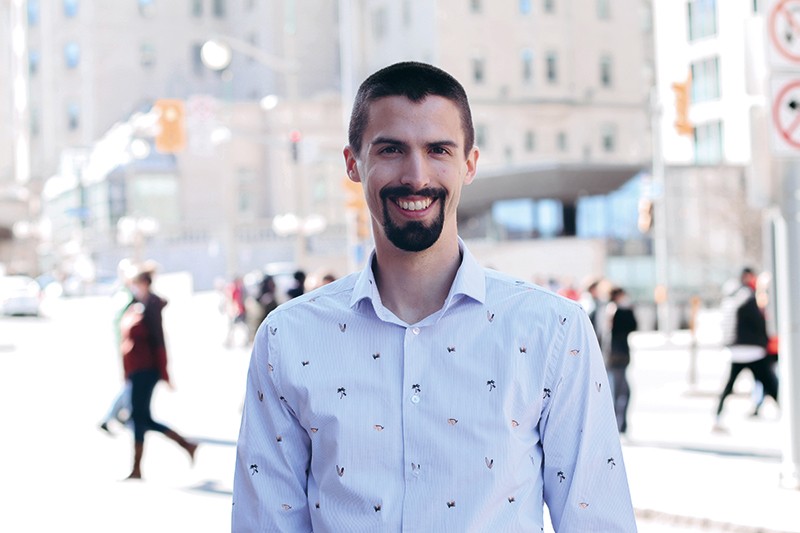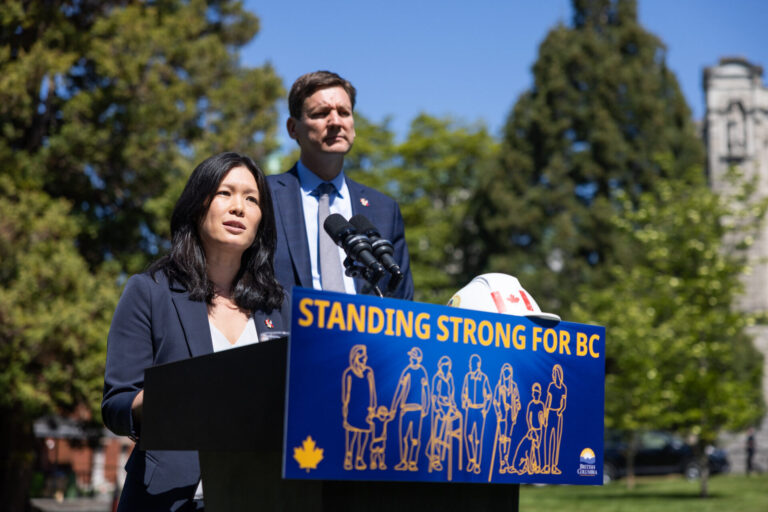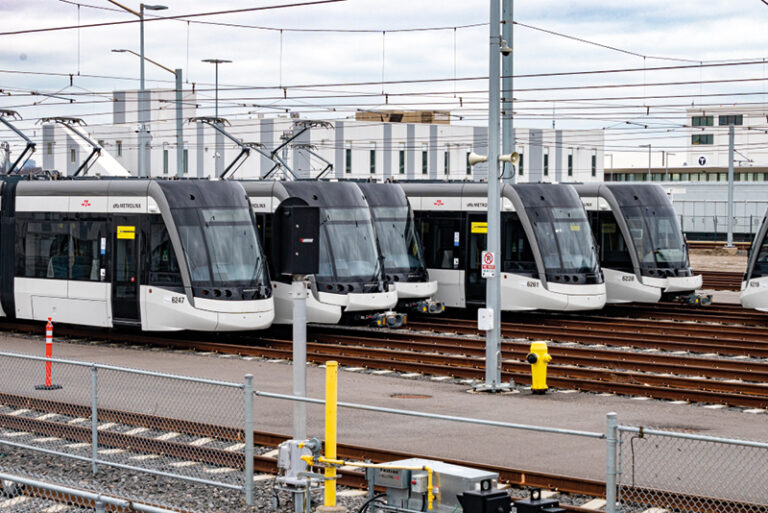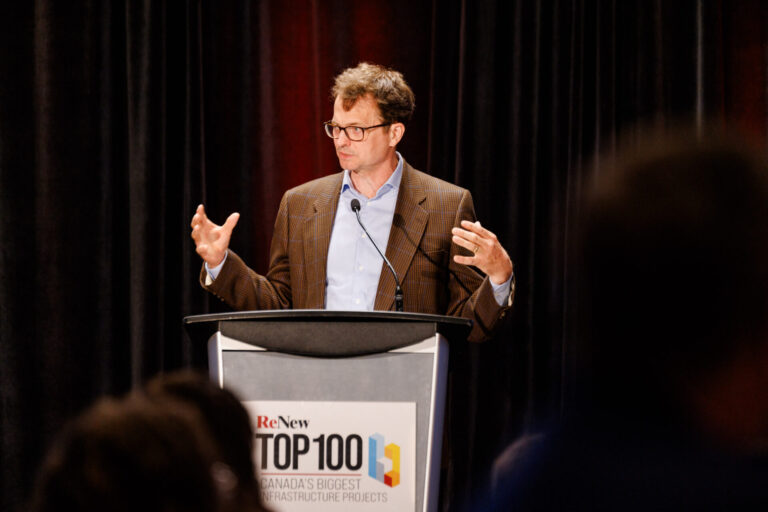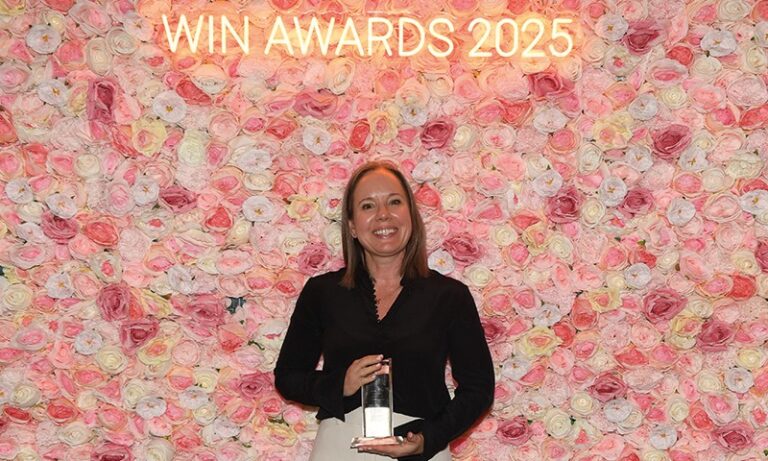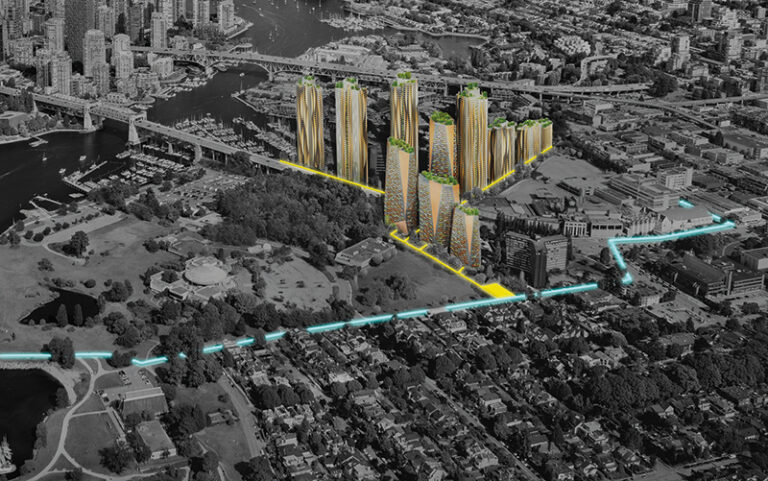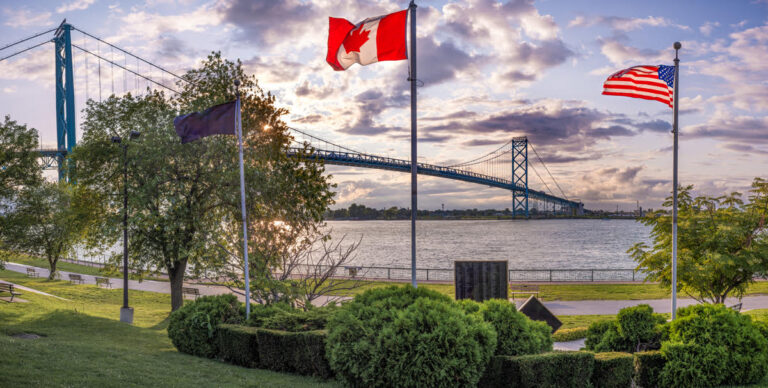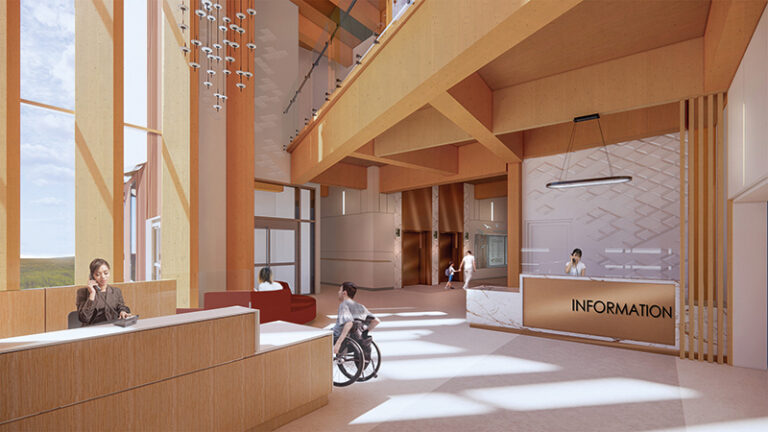Matt Pinder conveys his ambitious plans for active transportation transformation across the country
By Connie Vitello
Matt Pinder, a professional engineer with WSP Canada, is working to change the way Canadians move in a positive and practical way. Pinder currently works as a transportation engineer for WSP Canada where he contributes planning, design, and engineering skills to a variety of projects in communities across Canada.
Outside of his work, Pinder facilitates a popular transportation blog, Beyond the Automobile. He is also an enthusiastic member of the Transportation Association of Canada (TAC) Mobility Council and the Active Transportation Integrated Committee.
ReNew Canada recently encountered Pinder as he was participating in a TAC conference panel focused on developing future leaders in transportation, captivating the attention of 1,300 conference attendees. We knew we had to know more about this emerging leader.
What prompted you to become an engineer and to specialize in transportation infrastructure? Did you have a particular moment or mentor that influenced you?
I grew up knowing that I wanted to be an engineer—as engineering runs in my family—but I wanted to be different. I initially pursued mechanical engineering and started working HVAC and building design, but I felt like something was missing. When I reflected on it, transportation was a theme throughout my entire life: as a kid I loved riding bikes on dirt paths, as a teenager I travelled on bike to my job, and I enjoyed taking transit when I visited Toronto. I put the pieces together and realized that transportation is where my passion is, so I reconfigured my career. I took an internship at Metrolinx and pursued a Masters of Transportation Engineering at the University of Toronto.
What are some key themes of each of the projects you’ve worked on that will lead to more efficient infrastructure delivery?
A key theme of the projects I’m most proud of is that they are all pushing the envelope in terms of engineering design. We’ve spent the last 70 or so years developing good engineering guidelines for how to build roads and highways for cars. But when you talk to communities now and look at how things are changing there’s a growing interest to revisit walking and cycling as modes of travel. Unfortunately, we haven’t done enough to develop engineering guidance for active transportation, and we don’t have nearly as much ingrained experience. What really excites me about all these projects is that we’re not able to go to an engineering cookbook—rather, it’s an opportunity to investigate the newest academic research, share the latest data on health and environmental benefits, and essentially help change the client culture. Where I really thrive is on the cutting edge where we are given challenging problems, and we get to apply an engineering mindset to solving them.
What projects are you currently focused on for WSP?
I can tell you about a couple of exciting ones that I’ve just wrapped up. One was for the Ontario Traffic Council on how to design Protected Intersections. These intersections are designed to provide pedestrian and cyclist comfort and safety, to make clearly designated areas in intersections, to help prevent potential motor vehicle conflicts and reduce crossing distances for pedestrians and cyclists. Municipalities across Ontario are interested in building more protected intersections, and we’ve already seen an uptake in Kingston, Toronto, Burlington, and London. WSP was hired to provide a design guide for these. My team spent the last year coming up with an interactive, step-by-step guide with comprehensive considerations and user-friendly graphics.
The other interesting project I’d like to highlight is cutting edge in the context of bus stop designs. The conventional way of building bus stops has not been very safe from a cycling perspective, so we’re now adapting designs, but we’re also addressing concerns of people with sight loss. The Canadian National Institute for the Blind (CNIB) received a national grant to do this research, so WSP was hired to take on this task, visiting five sites across Canada. We visited Vancouver, Calgary, Winnipeg, London, and Montreal. Our staff met with up to six participants who are experiencing site loss at each site and went through the motions with them of embarking and disembarking from public transportation and navigating existing infrastructure. We analyzed the results, and, in the fall, we released a report on solutions to address these challenges.
What are your goals as Chair of the TAC Active Transportation Integrated Committee?
I’m fortunate to have had predecessors who provided the foundational work and it’s already quite operational, but I am bringing a new passion and an ardent desire to lead. I’m aware that people are volunteering their time to come to our meetings so it’s important to make the most of that time and to provide an inclusive experience. Some municipalities can be insular, but we need to share best practices and collectively come together. We are already planning for next year’s TAC conference. There has been a growing interest in active transportation. For instance, two years ago there were just a few active transportation sessions at TAC, this year there were eight and for the next one we’re putting in a proposal for double that.
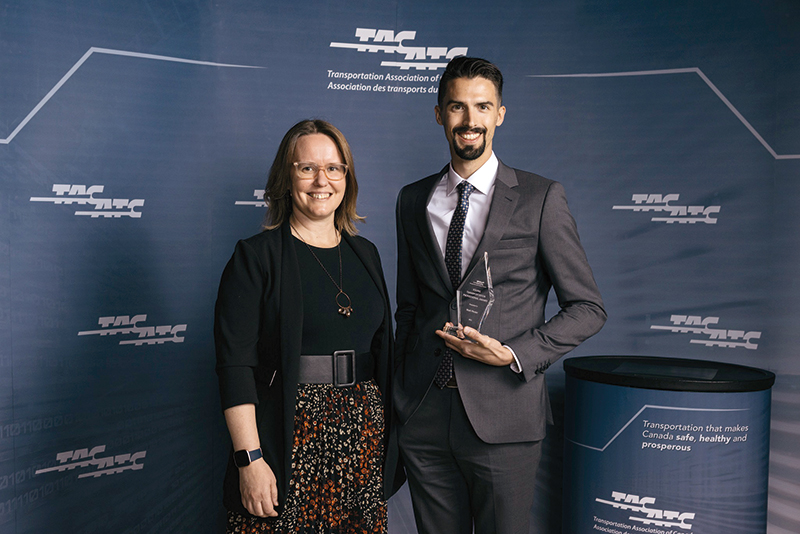
In a recent post on your blog, you stated that pedestrians are not at fault for “jaywalking” because current design practices are to blame. Which design practices do you blame the most?
It goes back to that 70 years of experience we have in designing for car travel. Meanwhile, we’ve neglected other modes of travel. We have standards that dictate how often you should build intersections to manage traffic, or you need this many cars at an intersection in order to justify a signal. However, we need to get better at focusing on the behaviour of people outside of cars. It takes empathy and compassion to think about why a pedestrian is crossing a busy road—they are probably trying to access a bus stop in time or a grocery store. We as engineers and designers have put that bus stop there. We must anticipate these issues better and plan our environments accordingly.
The central theme of a presentation you recently provided in Ottawa was that “When you build a city for cycling, everyone benefits.” Share the key takeaways.
I see cycling as a catalyst for change. When we’re talking about how to make a street bike-friendly, we also need to talk about a multitude of other things. If you’re coming from a perspective of “we have a busy road, so we’ll just add another bike path to it,” that’s different from asking all the right questions. Cycling is an entirely different mode of travel from driving and walking.
I’ve been inspired by a trip I had to the Netherlands to study what it takes to build a cycling city and I’ve struggled ever since to take something that is so advanced and to replicate it here. I had this experience of seeing a city built for cycling and I remember very clearly that it also works well for cars and pedestrian. It’s an incredibly accommodating place to be if you have a disability—the routes are compact and walkable, with mixed use options. A leading nation does more than just build bike lanes—it builds efficient, mixed-use, dense communities, while attaining sustainability and wellness goals.
What are your goals for the next few years in terms of career development?
I’m starting to get to the point in my career where I’m seeing the impact of my work and it’s incredibly rewarding. I’ve designed a bunch of things that are now being built and I’m able to travel around these sites and see them take shape. I’m also excited about the committee work and becoming a known professional who can be counted on to make a difference in the industry, to solve the big mobility issues that are getting us closer to building communities that are truly sustainable.
In terms of cycling adventures, I’ve spent a lot of time travelling around with my daughter, thanks to my new electric bike. We enjoyed venturing to parks and playgrounds together this summer. I look forward to teaching her how to ride her own bike and move around her community with independence.
Finally, in regard to optimal transportation infrastructure, which policies will be most likely to get us there?
I think the single most effective policy to date is when Infrastructure Canada decided to allot $400 million as part of the Active Transportation Fund. We’re starting to see the results of this commitment in communities across Canada. Small communities with limited budgets were able to build transformative multi-use trails and new community hubs. We’re also at a turning point with Complete Streets where we’re starting to see a snowball effect. The government should continue to support municipalities and transportation infrastructure—and we’ll see amazing results with traffic relief, a decrease in emissions, and an increase in healthy communities.
Connie Vitello is a contributing editor to ReNew Canada.
[This article originally appeared in the January/February 2024 edition of ReNew Canada]
Featured image: Matt Pinder, a leading transportation engineer with WSP Canada.

